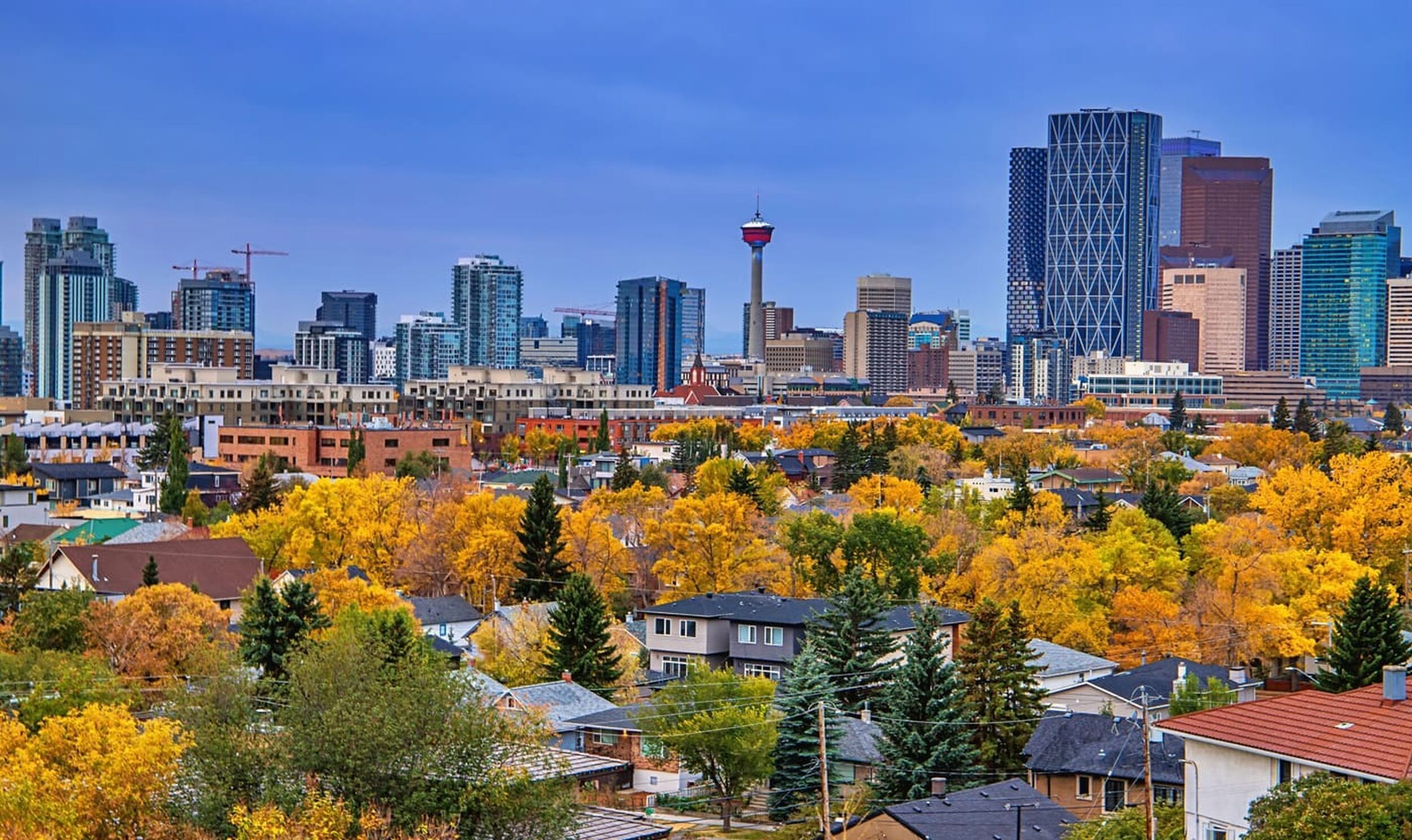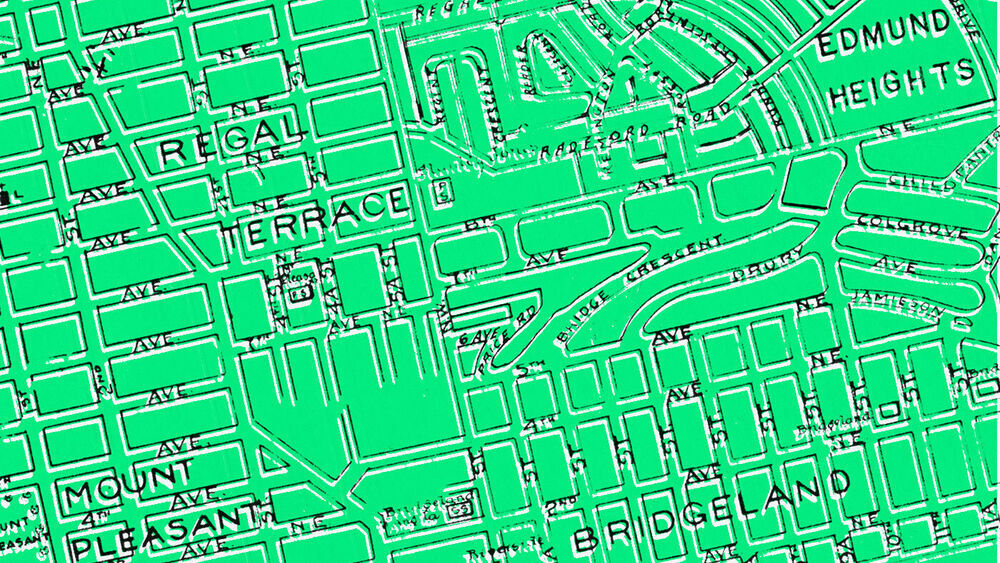
Photo: iStock/Lisa Marie
With guidebook, Calgary tries to curb urban sprawl — again
But is it all it’s hyped up to be?
Support in-depth Calgary journalism.
Sign Me Up!We connect Calgarians with their city through in-depth, curiosity-driven journalism—but we need your help! We rely on our readers and listeners to fund our work by pitching in a few dollars a month. Join us by becoming a Sprawl member today!
Unlike Vancouver and Toronto, Calgary rarely makes the headlines as an unaffordable city.
In 2018, one in five Calgarians spent more than 30% of their household income in housing—a threshold that indicates whether housing can be deemed affordable.
However, Calgary’s apparent affordability is supported by unrestrained sprawl, which produces the housing supply necessary to keep costs lower on the outskirts of the city.
But in the midst of a climate emergency, such a “strategy” for affordability is no longer acceptable.
Local politicians and planners have acknowledged this for years. In 2009, city council approved Calgary’s Municipal Development Plan (MDP), which outlined principles Calgary should follow to become sustainable, vibrant, and attractive for talent and investment.
These principles converge in the creation of “complete communities,” defined by the MDP as places “where people of all ages, incomes, interests and lifestyles feel comfortable and can choose between a variety of housing types and locations in which to live.”
The existing planning framework, however, doesn’t enable this vision.
City hall is falling short on key sustainability targets, including transit and shifting growth into existing neighbourhoods. If approved by council on March 22, the Guidebook for Great Communities is meant to help fix this by modernizing the city’s planning system and changing how existing neighbourhoods are redeveloped.
The guidebook gives Calgarians a vision of what our city’s future could look like. A vision that some are hyping as a silver-bullet for inclusiveness, affordability, environmental responsibility and economic prosperity.
But can a planning document fulfill these ambitious goals?
“In the absence of any additional policies… unfortunately, no,” said Byron Miller, professor of urban studies at the University of Calgary.
“It's a good step in the right direction. But we need a lot more.”
What the guidebook would change
In a nutshell, the guidebook would do two things: firstly, it would create multi-community plans instead of single Area Redevelopment Plans for every community, saving time and money; and secondly, it would re-focus the city’s current planning approach from zoning alone to include design considerations.
The guidebook would implement the MDP through a series of multi-community Local Area Plans. These plans would update Area Redevelopment Plans that are currently in place for individual neighbourhoods and create new ones for communities that don’t have one, indicating what kind of redevelopment is allowed and where.
Municipal regulation of urban development has traditionally been focused on land use, which prescribes uses and activities for any given site. The guidebook is a “hybrid code” that blends land use and design recommendations, prioritizing the latter.
City-led engagement for both the guidebook and Local Area Plans is meant to increase resident buy-in when new development is proposed, as people will have already defined what they want an area to look like and what types of design are welcome.
Having community members be the driving force behind urban form is one of the aspects that make the guidebook innovative, says Francisco Alaniz Uribe, an assistant professor at the School of Architecture, Planning and Landscape at the University of Calgary.
Providing lots of housing options contributes to social equity.
“[Planners] are really looking at the experience of the citizens,” he said. “If you look at the document, they start [by] talking about the experience of the pedestrian… and that’s a really good way of looking at things.”
Desirable city, expensive city
The guidebook’s goals are related to inclusiveness, affordability and economic prosperity—and these goals are to be met by allowing for more choices in terms of housing, transportation, and employment in existing neighbourhoods.
“Providing lots of housing options contributes to social equity; it allows for more diversity of choice within our communities,” said Robyn Jamieson, a senior planner at the City of Calgary, during a public information session on February 17.
“Simply by allowing for that choice, we create a lot more opportunity for housing to meet everyone’s needs, regardless of what your needs are.”
Last September, Coun. Carra explained in an interview with The Sprawl how this choice would be fostered by the guidebook through “missing middle” housing.
“Missing middle” describes small-scale multi-family housing such as townhouses, rowhouses, multiplexes, and live-work arrangements that have become increasingly difficult to build due to overly restrictive zoning regulations.
“A real solution is to transform planning through deep consultation with neighbourhoods to unlock those places where the missing middle should thrive… and then follow it up with the land-use bylaw that allows that by right,” Carra said.
Choice alone won't curb sprawl
But more choice alone is not enough to curb urban sprawl nor to increase housing affordability in Calgary’s inner city. As has been proven in Vancouver, density and “missing middle” haven’t kept housing prices from rising.
“I think [the guidebook] could be part of a larger suite of policies that help to promote inclusivity and affordability,” Miller said.
The document’s reliance on market mechanisms could undermine the supply of affordable housing. Miller notes that building new, attractive housing in desirable areas with access to amenities and to active transportation “means that the market is going to bid up the price of it.”
“Whenever you’re building desirable market housing, it’s not going to be inexpensive… So you need to be looking to non-market mechanisms,” he said.
And while it is true that desirable inner-city communities are more likely to be outside of moderate-income Calgarians’ price range, there are other factors affecting housing affordability, including the diversity of types.
Chris Ollenberger, managing principal of Quantum Place Developments, agrees that the guidebook won’t solve all affordable housing problems in Calgary, but over time, he says, a variety of housing forms can improve affordability.
“Making different products available in a space can change and reinvigorate a neighbourhood—and that’s really what the guidebook is talking about.”
If all you’re doing is designing in the context of the market, then there are a whole set of social needs that simply are not going to be addressed.
In the current zoning framework, missing-middle types of housing are restricted and require a longer process of redesignation, Ollenberger notes.
The guidebook could potentially address these challenges, as Local Area Plans would support the decisions made by city planners and council. (It’s important to note that developers would still have to apply for redesignation; the difference is that city admin would now have a document that supports their decision to approve multi-family housing in areas lacking an Area Redevelopment Plan.)
“It can be difficult to introduce missing-middle forms of housing in the block-structure that Calgary has,” Ollenberger said, noting that these issues stem from the restrictions placed by the land-use bylaw, such as setbacks and stormwater servicing requirements.”
“I don’t think the guidebook will really sing until there is a new land-use bylaw that works with it,” he added.
Yet he looks forward to the guidebook and the North Hill Local Area Plan being approved. “Because the communities had the input, and if you’re following along with the input… that does attract me because it’s a little bit of de-risking of the site.”
However, the localized implementation of the guidebook might exacerbate redevelopment pressures and affect affordability in the areas where new Local Area Plans are approved, with few tangible benefits for Calgarians.
“When the city designates land for zoning up, it’s basically increasing the value of the land,” Miller explained. And “…all that land is going to be captured by the private land-owners.”
Instead of letting private enterprises extract the value created by the Calgarians driving this vision, he suggests other mechanisms be implemented in tandem with the guidebook to return this value for public benefit.
“The City of Calgary should be making an effort to capture at least a portion, and preferably a substantial portion, of the increase in net land value,” he said. “Inclusionary zoning is one possible mechanism where, in return for increasing density there is a requirement that a certain percentage of those new units be affordable.”
Like inclusionary zoning, whether a home is occupied by renters or owners is outside of the influence of the guidebook.
Inclusionary zoning, more affordability
Canadian cities facing major affordability issues, such as Vancouver and Toronto, have explored inclusionary zoning as a way to ensure there’s housing stock for moderate-income households struggling to find a way into the market. Since 2018, Edmonton has also explored the possibility of setting a target of 16% affordable housing across the city.
But developers have reasons to oppose this approach. “Inclusionary zoning can have a place, I have no doubt about that,” Ollenberger said. “But sometimes municipalities put way too big a hammer on it, and basically stifle development.”
He thinks in addition to inclusionary zoning, providing more housing options in terms of form and tenure is key.
Like inclusionary zoning, whether a home is occupied by renters or owners is outside of the influence of the guidebook.
Planning policies that depend on market mechanisms have a limit to their capabilities. To successfully implement the MDP’s goals and benefit all Calgarians—not just affluent ones—city hall will need supporting policies such as inclusionary zoning and alternative ownership models.
“[Planners] are not there to set the policy agenda,” Miller said. “That’s the responsibility of our elected leaders.”
“If all you’re doing is designing in the context of the market, then there are a whole set of social needs that simply are not going to be addressed.”
Ximena González is a freelance writer and The Sprawl's urban affairs reporter.
Support in-depth Calgary journalism.
Sign Me Up!We connect Calgarians with their city through in-depth, curiosity-driven journalism—but we need your help! We rely on our readers and listeners to fund our work by pitching in a few dollars a month. Join us by becoming a Sprawl member today!


